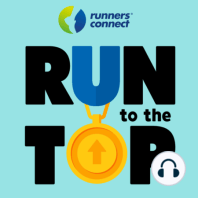54 min listen

ChiRunning: Maximum Efficiency and Minimal Impact for Pain-Free Running - Danny Dreyer
ChiRunning: Maximum Efficiency and Minimal Impact for Pain-Free Running - Danny Dreyer
ratings:
Length:
62 minutes
Released:
May 24, 2017
Format:
Podcast episode
Description
When ultramarathoner and running guru Danny Dreyer attended a tai chi class in 1999, a lightbulb went off. He believed the martial art’s principles of alignment, relaxation, and balance might allow him to finally make the next leap in training, and he wasn’t disappointed. After he began incorporating tai chi into his running, Danny not only witnessed dramatic improvements in his performance, but he also wasn’t getting injured any more. In fact, he’d finish a run feeling exactly the same as when he started. Wishing to share his discovery, Danny founded ChiRunning through which he’s helped thousands of runners conquer injury and run more efficiently to reach new levels. A mindful and process driven exercise rather than simply a means to an end, ChiRunning is also known as “moving meditation”, and it’s helped both recreational and elite athletes reduce impact for improved health, better performance, and more enjoyable running. Listen in as Danny discusses the benefits of ChiRunning as well as how you can achieve the technique so many runners swear by today. Here are some of the topics we’ll discuss today: A little about Danny and ChiRunning The ChiRunning technique Scientific evidence for the benefits of ChiRunning Danny’s opinion on footwear How to accomplish the ChiRunning technique Body Sensing ChiRunning School Success stories and elite runners that use this technique Questions Danny is asked: 3:05 What is your background with ChiRunning? 6:56 What are the principles of Tai Chi and how are they incorporated into biomechanics? 12:01 What is the foot-strike with ChiRunning? 13:44 What did the 2012 ChiRunning study at UNC - Chapel Hill involve? 18:29 In this study, how did shoes affect ChiRunners? 23:48 What is the ChiRunning technique? 28:41 What about cadence and stride rate? 29:35 How long does it take for a runner to learn this new motion? 30:30 How does this help or help prevent injury? 34:20 How would you advise runners adjust their form into ChiRunning? 37:43 What is Body Sensing and what are the benefits? 42:24 Is it more real-time analysis vs. post-activity analysis? 43:19 How is Body Sensing taught? 46:52 Do Runners need shoes for pronation / supination? 48:27 Do you do online consultations? 54:39 Listener question: Do people see significant improvements in their running times with ChiRunning? Quotes by Danny: “[ChiRunning] is all about really having great posture (really working on your posture)....working from your core or from your center but relaxing everything outside that. It’s really different than how most runners run.” “I would come back from a run and not even feel like I had gone for a run, so I thought ‘there’s something to this.’” “Tai Chi is based on how the body is designed, and how the human body is designed is all the big muscles and larger and stronger muscles are in the area of your core - or your “center”. Now in Tai Chi they call your center your “dantien”, and they call it your “power center”. It’s the place from which you move.” “Where do most of the running injuries happen?....From the knees on down….So what does that tell you? People are using all the teeny tiny, much smaller muscles to run with instead of all the big strong muscles in the middle.” “The running form is what’s important - not the shoes.” “As your knees bend as you pass over your support stride, then it turns into a very circular stride like your feet are going around in a wheel motion - like you’re pedaling a crankset to a bicycle.” “It’s also about reducing your impact. So not only are you getting faster easier, but you’re not creating any impact, which can wear out your muscles, joints, brake pads, things like that.” “I love that phrase ‘run yourself into the ground.’ That’s how a lot of people run: into the ground instead of across the ground.” “What I’ve come up with is 104 lessons - that’s one lesson a week for two years. And I did a video of each lesson, and then I did an
Released:
May 24, 2017
Format:
Podcast episode
Titles in the series (100)
Mark Cucuzzella – How Natural Running Shoes Finally Allowed Him To Run Pain Free: What do you do when you experience significant injury after injury, so much so that surgery no longer helps and most doctors tell you it’s time to hang up the running shoes? You hang up your shoes and try natural running, of course. In 2000, Dr.... by Run to the Top Podcast | The Ultimate Guide to Running